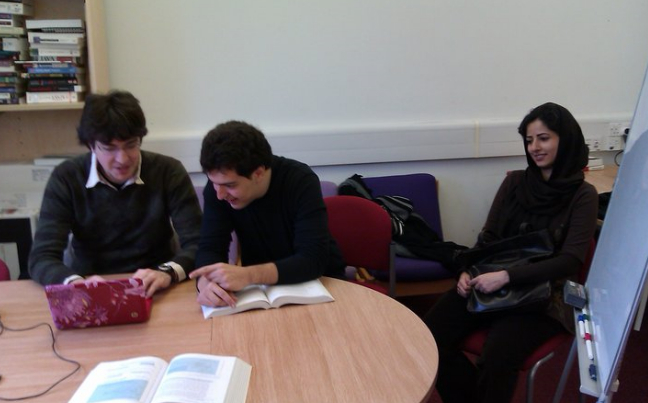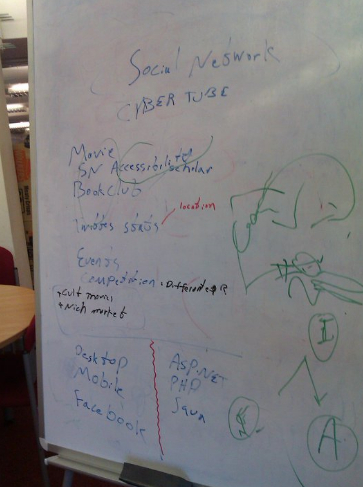Web-Enabled Online Network Effects
The network effects that our is going to utilize are the following [1]:
- Direct network effect: The more users start using our system the better recommendation will provide back to them.
- Indirect network effect: The more users start using Facebook the more people are likely to user our system.
- Cross network effect:
- The more users use our service the more actors and movie companies will use it to gain access to movie groups
- The more users use our service the more advertisers will found our service for advertisements.
- Social Network Effect: Users are influences by their friends which movie are going to see.
References
- A. Shuen, “Web 2.0: A Strategy Guide: Business thinking and strategies behind successful Web 2.0 implementations”, O’Reilly, 2008, pp. 41-42.
Surfing cyberspace of ideas
Hello everyone! It is the first entry of the “Cybertube” team blog which is designed to trace the development process of an application or, in a more comprehensive sense, a concept for social networking. During the next few months our team will post here ideas, experiences, stories about collaboration within our team, challenges faced and, hopefully, found solutions. Now we are in the beginning of our “journey” nevertheless we already have done some work. We ran a set of “hot” discussion sessions in order to produce an idea which could be useful or entertaining in terms of social networking processes. Having these group meetings (3 sessions) was very productive in the process of coming up with ideas, we were able to complete and extend each other’s thoughts. However, we soon realised that we can lose a lot of useful ideas if we do not keep minutes of our meetings, here we decided to take down the length of our discussion sessions and pay more attention to notes taking.
These brainstorming activities revealed areas which are potentially very interesting for all members of our team. These are include different sorts of recommendation systems on the base of existing relations between users in social networks as Twitter or Facebook, for example. Moving next we considered an idea of a combination of geo location facilities provided by Facebook with recommender systems that can reinforce the power and flexibility of a suggestion tool. Another area of our interests was focused on statistics gathering and analysis tool which also can be build on top of existing networks and provide a good overview of social networks impact on the information within the cyber society. Moreover, we took into consideration accessibility issues and reflected upon a special network or an add-one for Facebook or MySpace with a fully accessible and simple interface which can be used by people with disabilities.
In addition to that we started investigating the Social Network API’s in order to see what functionality is provided. More specifically we checked what information can be extracted from Facebook (JavaScript, Android, PHP SDK, graph API, Social Plug-ins) and from Twitter (using the Rest and streaming API). In order to examine described features we implemented one demo for Facebook and a simple application for Android. Screenshots are provided below.



